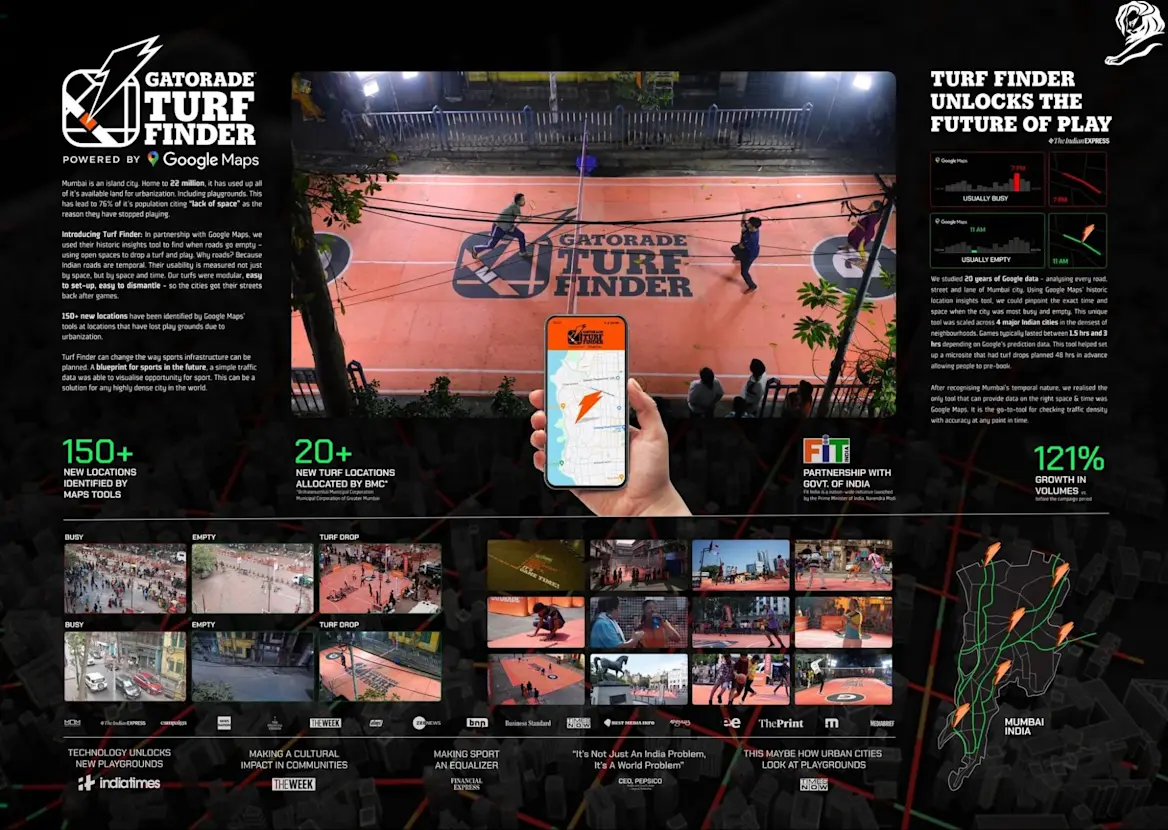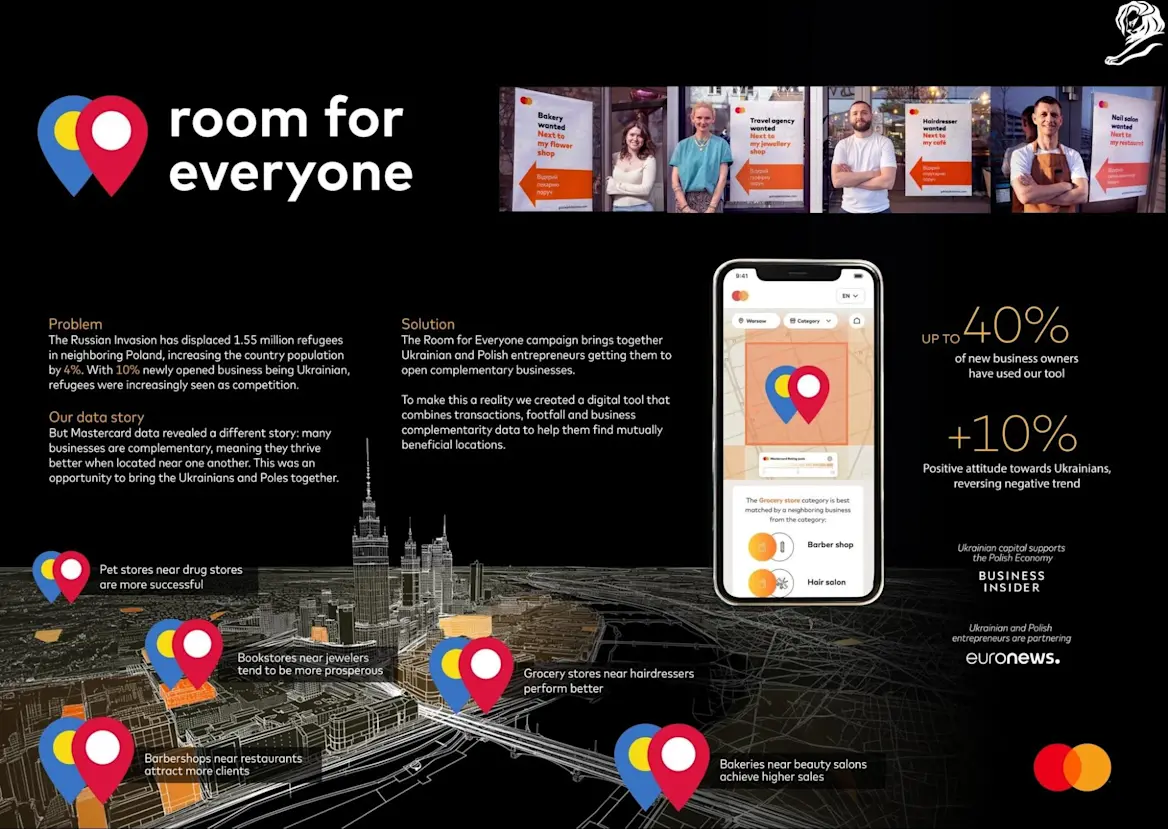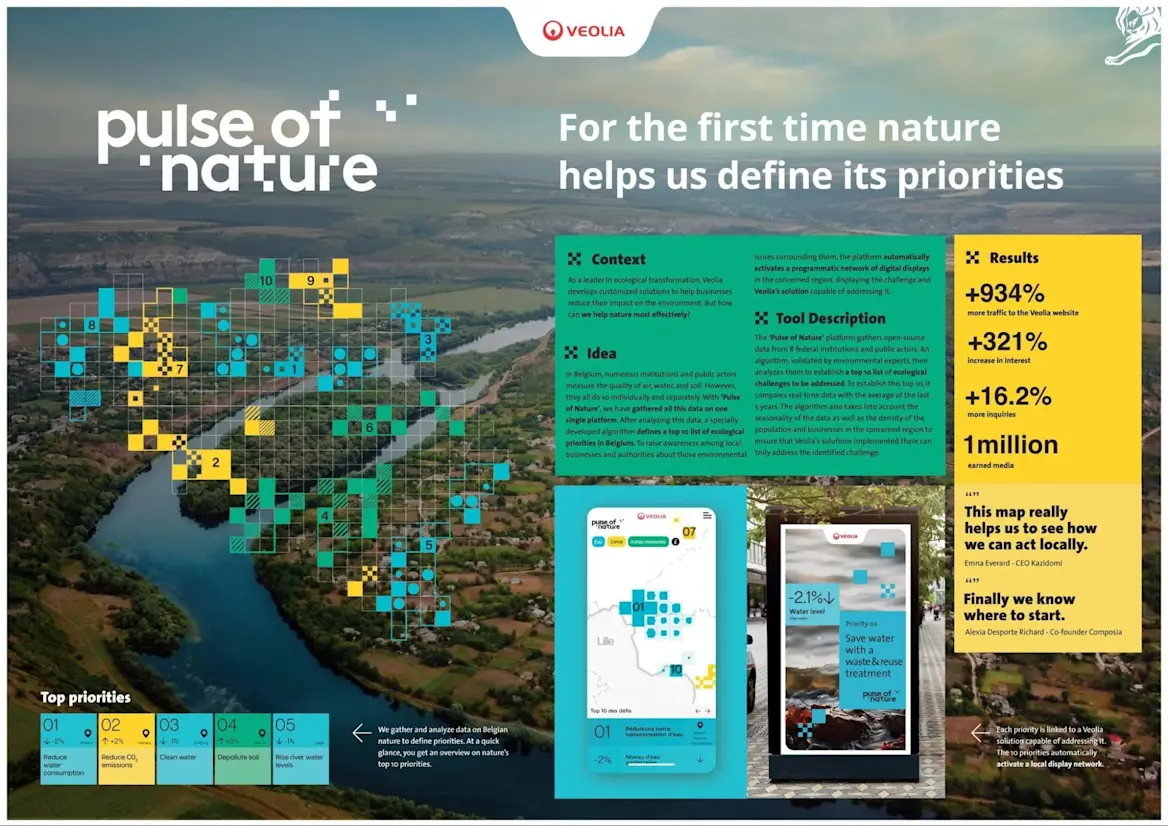Creative Data Lions
The Creative Data Lions celebrate the interplay of ideas and information.
Introduction

The history of the Creative Data Lions
The Creative Data Lions were introduced in 2015 to acknowledge and celebrate data’s critical role in crafting innovative and impactful brand stories. Initially focused on the effective use of data to understand audiences and drive creative strategies, the Lion has since expanded in scope as data has become integral to nearly every aspect of marketing and brand communication.
Today, data is not just a supporting tool; it is a dynamic driver of creativity that enables brands and agencies to create deeply personalised content, enhance consumer engagement, and deliver measurable results. By transforming raw data into meaningful insights and actionable ideas, brands can tell richer, more relevant stories that resonate on a personal level, fostering stronger and more lasting connections with their audiences. This shift underscores the evolution of data from a behind-the-scenes asset to a centrepiece of modern creative excellence.
What kind of work can be entered?
Work that effectively leverages data to create personalized and dynamic content, delivering highly tailored experiences that adapt based on individual preferences, location, or behavior. This may include work which utilises real-time data and user insights to enhance engagement and relevance.
Additionally, creative and impactful data visualization that makes complex information accessible and engaging, such as interactive charts and infographics as well as work that derives deep insights from consumer behavior to effectively segment audiences and tailor content to meet distinct needs, as well as projects that inform data-driven product innovation.
Work that enhances the customer experience through data, improving interactions with tools like chatbots, recommendation engines, and loyalty programs driven by customer insights are also eligible.
What’s the Jury looking for?
The work should demonstrate a sophisticated and innovative use of data which is driven by creativity and tangible business results. Also how data is used to push the boundaries of creativity, leveraging technologies such as AI, machine learning, or IoT in fresh, impactful ways.
The work should show how data can enhance customer engagement by providing deeper insights or creating relevant, real-time experiences. They should also demonstrate measurable outcomes – like increased customer engagement or sales – that demonstrate how data-driven creativity can lead to tangible business results, while maintaining high standards of creative excellence.

TURF FINDER | GATORADE | LEO BURNETT, MUMBAI | GOLD, CREATIVE DATA LIONS | 2024
The Categories

A. Creative Data
B. Culture & Context NEW
Creative data work that is brought to life through cultural insights and regional context.
Eligibility

Work will need to have been executed during the eligibility period of 8 February 2024 – 10 April 2025.
Is there a limit to how many times I can enter?
There’s no overall limit to how many times the same piece of work can be entered into Creative Data as long as the categories chosen are relevant.

ANIMAL ALERTS | PETPACE | SERVICEPLAN, MUNICH | SILVER, CREATIVE DATA LIONS | 2024
Previous Winners

Room for Everyone
Cannes Lions 2024 Grand Prix McCann Poland, Warsaw / Mastercard / 2024
To counteract growing negative sentiments towards Ukrainian refugees in Poland, financial services brand Mastercard introduced a platform that matched Ukrainian businesses with ideal spots near Polish counterparts. By showcasing mutual benefits, ‘Room for Everyone’ quickly attracted 12,000 users, with 40% of new businesses using it.
Why the work won
The 2024 Creative Data Jury awarded this work the Grand Prix for its impressive scalability and insightful use of existing client data. By tapping into data already available, the work demonstrated that transformational insights don’t necessarily require elaborate new data infrastructures. Jury member Ana Becker praised this approach, saying, “you don’t have to go that far. You don’t have to build a new database. Maybe the brilliant piece of data you need is in your client. You just need to look for it.” The Jury recognised this work for its simplicity and effectiveness, showing how creativity can arise from deeply understanding and repurposing existing data resources.

ROOM FOR EVERYONE | MASTERCARD | McCANN POLAND, WARSAW | GRAND PRIX, CREATIVE DATA LIONS | 2024
Inside the Jury Room: Creative Data Lions
To hear more from the Jury and how they decided on the winning work, check out the video below.
Inside the Jury Room: Creative Data Lions
Entries & Judging

What are the judging criteria?
A number of criteria will be considered during judging, weighted as follows: 20% creative idea/data solution; 30% data driven strategy; 30% use of data; 20% data driven results.
What do I need to provide with my entry?
To enter, you’ll need to complete an online entry form, which can be found on the Cannes Lions entry site. In the ‘Written Explanation’ section, you’ll be asked to provide the Jury with everything they need to know about your work.
You’ll also be able to submit optional supporting materials to provide additional context with your entry.
Subtitles are highly recommended on all case films, films, demo films and original content.
Detailed information outlining the entry process can be found on A Guide to the Cannes Lions Awards.
What if I don’t have all the details right away?
Don’t worry – you can fill in the form in any order and save your progress at any time while it’s still in the pending stage. However, please only check out when your entry is 100% complete as no changes can be made to your entry once you’ve clicked “Submit” and “Checkout”.
The Written Submission

Here’s the questions you’ll be asked regarding your work.
To start your entry to the Creative Data Lions, go to our Awards page.
The Jury will refer to the written explanation you provide throughout the judging process. Our advice is to provide as much relevant detail as possible.
When answering the following questions keep the main element you’re trying to celebrate in mind (e.g. the storytelling, the strategy, the craft, the use of data).
The bullet points under each question are prompts designed to guide your thinking, based on the factors the jury will be considering when reviewing your work. You might not need to use them all, and that’s totally fine. They’re there to help you consider what’s most important in your work.
Questions
Category Specific Questions

PULSE OF NATURE | VEOLIA | FAMOUSGREY, BRUSSELS | BRONZE, CREATIVE DATA LIONS | 2024
Contact us

Everything you need to know to enter
For more detailed information on how to use the entry site, craft a compelling submission or submit your work we have a whole range of resources.
From Entry Guides that give you a step-by-step overview of the entire process to the Entry Kits that provide all the detailed rules and requirements for each and every category.

We are here to help
As Awards Experts, we know the Lions inside out. We can help with:
- Sharing the updates to the Awards for 2025
- Offering best-practice advice on how to craft a compelling entry
- Discussing your work and relevant categories
- Scheduling regular catch-ups to answer any questions that arise throughout the entry process.
Whether you have a specific query or would like expert advice, get in touch today.
Email: awards@canneslions.com Helpline: +44 0 20 7046 1155